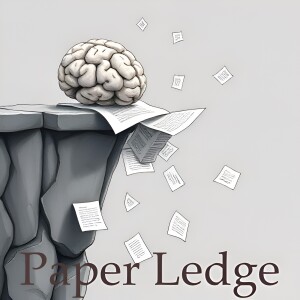
- Podcast Features
-
Monetization
-
Ads Marketplace
Join Ads Marketplace to earn through podcast sponsorships.
-
PodAds
Manage your ads with dynamic ad insertion capability.
-
Apple Podcasts Subscriptions Integration
Monetize with Apple Podcasts Subscriptions via Podbean.
-
Live Streaming
Earn rewards and recurring income from Fan Club membership.
-
Ads Marketplace
- Podbean App
-
Help and Support
-
Help Center
Get the answers and support you need.
-
Podbean Academy
Resources and guides to launch, grow, and monetize podcast.
-
Podbean Blog
Stay updated with the latest podcasting tips and trends.
-
What’s New
Check out our newest and recently released features!
-
Podcasting Smarter
Podcast interviews, best practices, and helpful tips.
-
Help Center
-
Popular Topics
-
How to Start a Podcast
The step-by-step guide to start your own podcast.
-
How to Start a Live Podcast
Create the best live podcast and engage your audience.
-
How to Monetize a Podcast
Tips on making the decision to monetize your podcast.
-
How to Promote Your Podcast
The best ways to get more eyes and ears on your podcast.
-
Podcast Advertising 101
Everything you need to know about podcast advertising.
-
Mobile Podcast Recording Guide
The ultimate guide to recording a podcast on your phone.
-
How to Use Group Recording
Steps to set up and use group recording in the Podbean app.
-
How to Start a Podcast
-
Podcasting
- Podcast Features
-
Monetization
-
Ads Marketplace
Join Ads Marketplace to earn through podcast sponsorships.
-
PodAds
Manage your ads with dynamic ad insertion capability.
-
Apple Podcasts Subscriptions Integration
Monetize with Apple Podcasts Subscriptions via Podbean.
-
Live Streaming
Earn rewards and recurring income from Fan Club membership.
-
Ads Marketplace
- Podbean App
- Advertisers
- Enterprise
- Pricing
-
Resources
-
Help and Support
-
Help Center
Get the answers and support you need.
-
Podbean Academy
Resources and guides to launch, grow, and monetize podcast.
-
Podbean Blog
Stay updated with the latest podcasting tips and trends.
-
What’s New
Check out our newest and recently released features!
-
Podcasting Smarter
Podcast interviews, best practices, and helpful tips.
-
Help Center
-
Popular Topics
-
How to Start a Podcast
The step-by-step guide to start your own podcast.
-
How to Start a Live Podcast
Create the best live podcast and engage your audience.
-
How to Monetize a Podcast
Tips on making the decision to monetize your podcast.
-
How to Promote Your Podcast
The best ways to get more eyes and ears on your podcast.
-
Podcast Advertising 101
Everything you need to know about podcast advertising.
-
Mobile Podcast Recording Guide
The ultimate guide to recording a podcast on your phone.
-
How to Use Group Recording
Steps to set up and use group recording in the Podbean app.
-
How to Start a Podcast
-
Help and Support
- Discover

Computer Vision - Sparse Autoencoders Learn Monosemantic Features in Vision-Language Models
Hey PaperLedge crew, Ernis here! Get ready to dive into some seriously cool research that's all about giving AI a little more... well, common sense and steerability. You know how sometimes you feel like you're talking to your phone's assistant, and it just doesn't get what you mean, even though you're being crystal clear? This paper is tackling that head-on, but for way bigger and more complex AI models!
So, the stars of our show today are these things called Sparse Autoencoders, or SAEs. Think of them like tiny, super-efficient translators for AI. Imagine you have a messy room filled with all sorts of random objects. An SAE is like a minimalist interior designer who comes in and organizes everything into neat, labeled boxes. It takes the complex "language" of a big AI model and breaks it down into simpler, easier-to-understand components.
Now, this paper isn't just about any AI, it's focused on Vision-Language Models, or VLMs. These are the AIs that can "see" an image and "understand" what's in it, like CLIP. They can then describe that image in words or even answer questions about it. Think of it like showing a VLM a picture of your cat and it being able to tell you it's a fluffy, orange tabby sitting on a rug.
The researchers took these SAEs and applied them to the "vision" part of VLMs. They wanted to see if they could make the AI's understanding of images more monosemantic. Hold on, that's a mouthful! Basically, it means making sure that each "neuron" (think of it as a tiny processing unit in the AI's brain) focuses on one specific thing. So, instead of one neuron firing for "cat" and "fluffy" and "orange," you'd have one neuron dedicated to "cat," another to "fluffy," and another to "orange."
Their results were pretty awesome! They found that SAEs did make individual neurons more focused. Even better, they discovered that the way the AI was organizing information was actually making sense! Like, it was grouping things in ways that experts would agree with. For example, it might group different types of birds together, which aligns with how biologists classify them in something like the iNaturalist taxonomy.
But here's the real kicker: they found that by using these SAEs, they could actually steer the output of other AI models! Imagine you have a remote control that lets you tweak how an AI is "thinking" about an image. That's essentially what they achieved. They could influence how a VLM like CLIP "sees" something, and that, in turn, would affect what a completely different AI, like LLaVA (which can generate conversations based on images), would say about it. And get this – they didn't have to change LLaVA at all! It's like changing the input to a recipe and getting a different dish without altering the cooking instructions.
"These findings emphasize the practicality and efficacy of SAEs as an unsupervised approach for enhancing both the interpretability and control of VLMs."So, why is this important? Well, it has huge implications for:
- Improving AI Safety: By making AI more interpretable, we can better understand why it's making certain decisions and prevent it from going off the rails.
- Enhancing AI Control: The ability to steer AI outputs opens up possibilities for creating more customized and helpful AI assistants. Imagine an AI that can tailor its responses based on your specific needs and preferences.
- Advancing Scientific Discovery: The fact that SAEs can uncover meaningful structures in data suggests that they could be used to analyze complex datasets in fields like biology and medicine.
This research shows that we're getting closer to building AI that is not only powerful but also understandable and controllable. It's like opening the hood of a car and finally being able to see how all the parts work together! It has practical implications across different fields, and impacts how we might interact with AI in the future. It really makes you think, right?
Here are a couple of questions bubbling in my mind after diving into this paper:
- Could these SAEs help us uncover biases in VLMs that we might not be aware of right now?
- If we can steer the outputs of VLMs so effectively, what are the ethical considerations we need to be thinking about?
That's all for this episode, folks! Keep learning, keep questioning, and I'll catch you on the next PaperLedge!
Credit to Paper authors: Mateusz Pach, Shyamgopal Karthik, Quentin Bouniot, Serge Belongie, Zeynep Akata
More Episodes
Create your
podcast in
minutes
- Full-featured podcast site
- Unlimited storage and bandwidth
- Comprehensive podcast stats
- Distribute to Apple Podcasts, Spotify, and more
- Make money with your podcast
It is Free
- Privacy Policy
- Cookie Policy
- Terms of Use
- Consent Preferences
- Copyright © 2015-2025 Podbean.com





